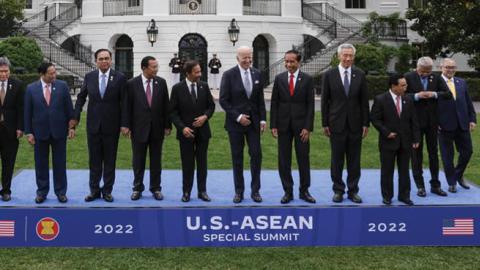The Biden administration rolled out the red carpet last week for leaders of eight of the 10 members of the Association of Southeast Asian Nations. Hosting what the White House described as a “special summit” in Washington was, in theory, an excellent idea.
Asean members like the Philippines, Vietnam, Indonesia and Thailand are vital to American policy in the Indo-Pacific. Threatened by Chinese territorial claims in the South China Sea, most Asean states welcome Washington’s presence in the region and fear that an easily distracted American foreign-policy elite lacks a firm commitment to their region. Holding a high-profile Washington summit is one way to telegraph the importance of Asean to Washington’s Indo-Pacific strategy, especially at a time when the war in Ukraine dominates Washington politics.
Unfortunately, the summit highlighted the strategic deadlock that has challenged America’s regional diplomacy during the Biden era. This deadlock has prevented the inauguration of a new era of cooperation between the U.S. and key Southeast Asian regional leaders. There is a fundamental mismatch between what Southeast Asia needs from the U.S. and what, given the state of the foreign-policy debate among Democrats, President Biden can offer.
Read the full article in the Wall Street Journal


















